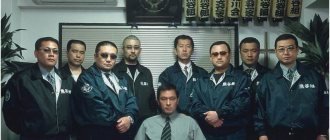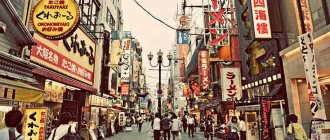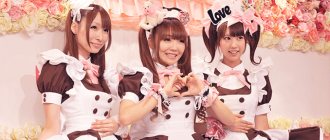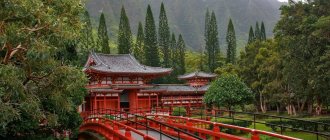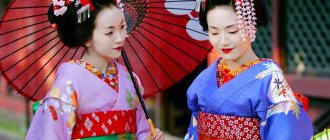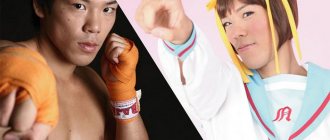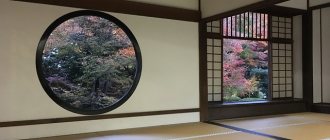It's completely normal to eat raw horse meat in Japan.
Many of us cringe at the thought of eating horse meat, especially raw and cold. But in Japan, raw horse meat, also called basashi, is considered a delicacy and is served in many restaurants. This is not a new fad; the Japanese have been eating raw horse meat for decades.
Basashi is much healthier than pork and beef, and it is much more difficult to catch E. coli from it. Horse meat is high in protein and linoleic acid, but low in calories. In addition, horse meat may be able to prolong life. Demographic data published in 2013 showed that people from Nagano Prefecture live the longest in Japan: the average life expectancy is 80.88 years for men and 87.18 for women. Their secret is that they eat horse meat.
Special cases
Kyoto
For example, the Kyoto Tower address is listed on their website as:
〒600-8216 京都市下京区烏丸通七条下ル東小路町 721-1
The postal code is followed by the city and county, followed by the unofficial address, a space, and the official address:
京都市下京区Kyoto-shi, Shimogyo-ku
烏丸七条下ル
Karasuma-Shichijo-sagaru
東塩小路町 721-1
Higashi-Shiokoji 721-1
However, the system is flexible and allows for various alternatives, such as:
Kyoto -fu, Kyoto-shi, Shimogyo-ku, Karasuma-Shiokoji-agaru
"(On) Karasuma (street), above (north of) Shiokoji (street)"
For lesser-known buildings, the formal address is often given after the informal one, as in the address of the Shinatora Ramen restaurant:
京都府京都市下京区烏丸通五条下大坂町 384 Kyoto-fu, Kyoto-shi, Shimogyo-ku, Karasuma-dori-Gojo-sagaru, Osakacho 384
"Ōsakach 384, (on) Karasuma Street, below (south of) Gojo"
〒600-8216 京、下、烏丸七条下Karasuma-Shichijo-sagaru, Shimo–, Kyo–, 600-8216
Sapporo
札幌市中央区北 5 条西 2丁目 5番地Sapporo-shi, chuu-ku, kita-5-jo-nishi 2-chome 5-banchi
This address indicates that it is the fifth building on the block located at 5 jo
to the north and 2
cheme to
the west of the center, named with the real cardinal names of
kita
(north),
minami
(south),
nishi
(west) and
higashi
(east).
jo
names extend approximately 7 kilometers north/south along the main Soseigawa Dori, but no more than 3 kilometers east and west;
Outside this area, jō
have other names, although the starting point of each is still a corner towards the city center, often using landmarks such as the Hakodate Main Line or major roads to mark the new numbering.
Japan - the land of vending machines
The Japanese love vending machines - there are about 5,520 different ones scattered across the country. Over the years, these machines have improved significantly, some of them very convenient, others downright strange.
In most countries, vending machines usually sell snacks: chips, candy, soda. But the Japanese combine the practicality of vending machines with their love of innovation and the unusual.
In Japan, it is completely normal to buy fresh eggs, bags of rice, bouquets of fresh flowers, toilet paper, condoms, umbrellas, live fish, porn magazines - anything you can imagine from vending machines. Unusual, but very convenient.
Post-war recovery
Although it's hard to imagine today, immediately after the war, Hato no Machi was a busy red-light district, one of the areas where authorities turned a blind eye to prostitution. The name of the area, which means "Dove Street," is said to come from a slang word for the women who worked there. Some of these houses survive to this day and can be recognized by the distinctive tiles that border the façades, giving them the appearance of a bathhouse turned inside out. In one of them, pink and green tiles cover luxurious columns and cornices around a boarded-up door, near which stands an old abandoned umbrella.
An eerie silence hung over the area that was once a red light district. The distinctive tiled façade indicates that the house was formerly a brothel. On the right is a relic from an era before smartphones.
On the eaves of the wooden building next door there is a sign that reads "Telephone and Telegraph Services Here"
The Eden restaurant was named after the classic film adaptation of Steinbeck's novel East of Eden (1955). Not much has changed inside since James Dean starred in this film.
The owner serves a refill of the daily special. “If it’s not broken, why change it?” An old telephone and bills lie near the cash register.
The Eden coffee shop and restaurant has been around since 1959, when the area was thriving. “Back then you had to keep your eyes open,” the owner recalls with a smile. “There were these guys everywhere,” he says, running a finger across his cheek, a gesture that signifies “yakuza.” “But they left a long time ago, and only the good guys remained here.” Many of Eden's regulars have been coming here for decades to meet and chat.
Matsuhashi Kazuaki: “We want to preserve our unique atmosphere and history.”
“The Hato no Machi shopping street is almost 80 years old,” said Matsuhashi Kazuaki, owner of the Cat Bank hair salon and chairman of the local union. – After the red light district ceased to exist in the fifties, the street became a regular shopping area specializing in fresh produce. At first, geisha courts and traditional restaurants in nearby Mukojima were the main customers. But when these places fell out of favor among important politicians and businessmen, the area began to fade. The local population was aging and many businesses had closed permanently.”
In Japan, it's completely normal to slurp when eating noodles or soup.
In the Western world, it is customary to eat without making any unnecessary sounds - slurping or slurping is considered unnecessary and rude. But in Japan, it's quite the opposite - slurping is completely normal and acceptable, even in public. And even highly recommended.
When the Japanese eat hot soup or noodles, they smack, slurp, slurp and behave like pigs from a Westerner's point of view. Why? This behavior in Japan is seen as a sign of appreciation and approval. This means that you like the soup or noodles so much that you want to cram as much as possible into your mouth at any cost. In other words, this behavior is a compliment to the cook for a job well done.
Baseball is very popular in Japan
The national sport in Japan is sumo, and the most beloved and popular is baseball, otherwise called yakiu. It was brought to Japan by an American athlete named Horace Wilson: in 1873, the first baseball match took place at the University of Tokyo under the leadership of Mr. Wilson, and since then yakiu has become the most beloved team sport in Japan.
There are two professional baseball leagues in Japan: Pacific and Central. Additionally, baseball is played in high schools and universities throughout the country. Games involving high school teams are often enjoyed on television, and amateur games are often shown on national television.
Japan has a very high suicide rate
Japan, as we have already said, is a rich country with an interesting history and vibrant culture. She's beautiful. It is home to a modern, disciplined, hardworking and in every way successful nation. But not everything is so rosy: Japan has a very high suicide rate. More than 30,000 men and women take their own lives each year, with an estimated 24.4 out of every 100,000 Japanese citizens likely to commit suicide.
Suicide has become a serious problem in Japan: in fact, it is the leading cause of death for women aged 15 to 34 and men aged 20 to 44.
Why does this happen in a wealthy, highly developed country? Apparently, Japan has a big problem with unemployment. If they suddenly fail to keep their jobs, many former employees take their own lives. The saddest thing is that most often young people commit suicide due to problems with work, many of them are recent university graduates. Other causes of suicide among Japanese are depression and financial difficulties.
Attracting the New Generation
Today, however, the well-preserved local flavor attracts the younger generation with its exotic charm. Matsuhashi believes this could be the key to the area's revitalization and prosperity in the future.
This is what the Suzuki-so house looks like
“We want to preserve our unique atmosphere and culture while revitalizing the area for the future. This idea formed the basis of the project “Try to live here! Suzuki-so", which began in 2008. We decided the best way to bring fresh energy was to bring in young people with fresh ideas.” A few years ago, the local trade union association began renting out the Suzuki-so building, an empty building that was about to be demolished. The association began to rent out apartments in this building to young people with the expectation that they would approach the matter creatively. “We tried to keep rent to a minimum. We wanted young people to use the building for workshops, small projects, something creative...” Today, Suzuki-so is fully occupied.
Paper store "Kami kobo Dotido". / Store interior.
Part of the building is occupied by Kami Kobo Dochido, a paper crafts boutique. The spare, minimalist interior is adorned with displays of original notebooks, papers and cards, many made from recycled materials and old packaging, given new creative life. “My husband came up with the idea,” says a young woman who works at the store. “He helped my parents at the paper mill downriver in the Ryogoku area. Each time he picked up the paper from the floor and said that he was sorry that so much paper was thrown away. When we heard about this project, we immediately knew it was the perfect opportunity.”
Find the Tree of Heaven!
“Many young artists, writers and other creative people are moving to this area. The entire area becomes more than just a place for flea markets and old book fairs. I think people are attracted to the old-time aura and special atmosphere. This is something that is difficult to find in other places in Tokyo.”
An entire family uses the same bathing water in Japan.
For the Japanese, a bath is not only a way to wash away dirt from the body, it is also an effective way to relax the mind, body and spirit. That's why many Japanese take hot baths in the evenings and regularly go to hot springs. Unlike the Western world, members of the same Japanese family use the same water for bathing. But they do not take a bath at the same time: the father washes first, the mother follows, and then the children.
Almost every Japanese home has a bathtub, but the Japanese use the bathtub more for relaxation than for washing. Of course, the Japanese are very careful about hygiene, but they wash not in the bathroom itself, but in the basin next to it. And after they thoroughly wash themselves and wash off all the soap and dirt, they lie down in the bathroom and relax.
Because they wash in a different water, the hot water remains clean and clear for other family members to use. It is interesting that if there is a guest in the house, then he is given the honor of lying in the hot bath first.
Hato no Machi: Preserving the Past
A few minutes away, in Higashi-Mukojima, is another Shitamachi
has launched an ambitious project to attract creative young people to breathe new life into this unique area and ensure its survival.
At first glance, Hato no Machi Street looks like a place where time has stood still. Narrow alleys lined with rusty bicycles and abandoned machine guns, Hato no Machi goes back almost 80 years, which is ancient by Tokyo standards. It was one of the few areas of the city that survived the 1945 bombings.
View of Hato no Machi street
Another view of the "Heavenly Tree"
At the beginning of the street there is a blue water pump, dwarfed by the giant tower. The pump collects rainwater from the roofs of nearby houses in case of possible fires and other disasters. The lanes here are too narrow for fire trucks to pass. The only possible source of traffic noise is a passing bicycle delivering food. Quiet music flows from someone's radio. From the kindergarten around the corner you can hear children jumping rope.
In Japan, many streets have no names.
Yes exactly. But how then do the Japanese navigate their cities among nameless streets? They simply have a unique address system: instead of street names, they use block numbers.
Each quarter is assigned a unique number - this number serves as the address. The spaces between the blocks—the streets—remain without names. In Japan, people usually say: “I live in the second block” or “I work in the 13th block” instead of: “I work on Crocodile Street” or “I live on Banana Avenue.”
To many people from Western countries, this system may seem confusing and ineffective, but in reality it is not. It is very easy to get used to such a system, it is also easy to use, and thus you can find the desired area very quickly.
For example, if the restaurant you are looking for in Tokyo is located in the 12th district, then you need to take a map and find the block numbered 12 on it. And that’s it - you have found where to go. In addition, the block number is easier to associate with a place on the map and remember the route than the street names we are used to.
Japanese address example
To understand why Japanese addresses confuse any unprepared European, let's start with an example. Here is the address of one of the hotels, a popular business hotel chain in Japan, APA Hotel (we dedicated an entire article to them about business hotels in Tokyo):
〒103-0007 東京都中央区日本橋浜町3丁目43−8
In Japan, it is customary to write addresses according to the principle “from greatest to least,” so we will use the Hepburn system and reverse the order of the address in the modern European manner to make it easier to understand what it consists of.
So:
3 Chome-43-8 Nihonbashi-hamacho, Chuo City, Tokyo 103-0007
We can immediately ask the question:
Where is the actual street?
The answer is nowhere.
With rare exceptions, streets are not used at all in the Japanese address system.
Most Tokyo residents may not even know what specific street they are on at the moment. We decided to devote a whole paragraph to the streets, so we’ll come back to them later.
For now, let's deal with addresses.
Once we understand the structure of a Japanese address, it will be much easier for us to navigate and use navigation such as Google or Apple maps.
A typical address sign in Tokyo. Taito-ku, Ueno-3(san)chome, 6th microdistrict (5th building/site).
It is normal for adult men to adopt in Japan.
Typically, couples from Western countries adopt infants or young children. The reasons may be different - infertility or friendly communication, it doesn’t matter. But in Japan, things are completely different: for many Japanese families, especially wealthy ones, it is completely normal to adopt adult men.
Why? There are two reasons. Firstly, an adult man will become the continuer of the family. Japan, like many other countries in the world, is a patriarchal society, and surnames are passed down through male children. Couples who only have daughters may well consider adopting an adult male into the family to keep the family line alive.
Secondly, an adult man will provide the family with additional financial support (if the family is not very wealthy) or help in business. This practice is quite common among wealthy Japanese families who own large companies.
Adult men can inherit and manage the family business or start their own. Even if the family has other male contenders for the inheritance, but the father sees that they are not suitable for running the business, he can accept a good leader into the family.
Japanese address structure
As they have already said in Japan, it is customary to write address details “from largest to smallest,” therefore, using this principle, let’s understand the structure of the Japanese address in order.
Let's take a Tokyo address, since experience suggests that for most of us, Japan begins in Tokyo.
The Japanese capital, in accordance with Japanese administrative divisions, has a completely separate special status at the prefecture level: metropolitan status -都[to].
The official name of the city in Japanese is東京都(Tokyoto), not 東京市 (Tokyoshi), for example. From a formal point of view, this is not a city at all.
That's sorted out. “Japan, Tokyo”, nothing complicated yet.
Go ahead.
Tokyo is divided into separate special administrative regions -区[ku], which in English are traditionally called ward.
True, recently the districts of Tokyo themselves prefer to call themselves cities .
The Taito Ward, Shinagawa Ward forms can be found primarily on road signs, and the Taito City, Shinagawa City forms on everything else. From modern address signs to signs in institutions. The meaning in both cases is the same, do not let this mislead you.
Popular Shibuya (渋谷) is also a separate administrative district (区) and officially calls itself Shibuya City.
This can immediately mislead foreigners - it seems like we are in Tokyo, the largest “city” in the world, and on every corner we are greeted either in Shibuya City or in Minato City.
The situation has become more complicated, but for now it’s bearable. "Japan, Tokyo, Shibuya-ku."
But here, unfortunately, the Japanese system immediately attacks us with all its force.
Such special areas区(ku) are divided into quarters -町(cho: or mati), and then sub-quarters丁目(chome) sub-sub-quarters, let's call them microdistricts街区(nut) and already at this level, we find the number house番号(bango:) or less often the number of the land番地(banti).
It is very difficult to carry out a direct analogue with European or American addresses.
The closest example is Czech Prague, where the cadastral number is also used for addressing purposes, but the houses are still located on a specific street and have serial numbers.
Let's look at examples:
Here is the address of the police station located next to the Tokyo subway station Omote Sando (表参道駅) on the street of the same name. The full address of this property is 東京都港区青山3丁目5−23 (Tokyo-to Minato-ku Aoyama 3-chome 5-23).
Now in order:
- 東京都 (Tokyoto) - means Tokyo;
- 港区 (Minato-ku) is the administrative district (区) of Minato;
- 青山 (Aoyama) - quarter (町) of the Minato district;
- 青山3丁目 (Aoyama sanchome) - lit. Aoyama-3 means 3rd sub-district (丁目) in Aoyama;
- 5−23 - respectively mean the 5th microdistrict and the 23rd building or site.
But the neighboring restaurant, which is located 50 meters from the station, will have the same address, but the last numbers will be 5-17. Since the restaurant is the 17th building in this 5th microdistrict.
You can practice yourself by entering this address into Google or Apple Maps.
Information at the intersection in Minato-ku (港区) that Aoyama-1(itcho)me (青山一丁目) begins here
As they say, let’s consolidate what we’ve learned.
APA Hotels chain mentioned above - 〒104-0031 東京都中央区京橋3丁目11−2
Let's analyze it in the same way:
- 東京都 (Tokyoto) - means Tokyo;
- 中央区 (Chu:o:-ku) - administrative district (区) of Chuo;
- 京橋 (Kyobashi) is a neighborhood (町) in Chuo District;
- 京橋3丁目 (Kyo:bashi-sanchome) - lit. Kyobashi-3 means the 3rd sub-district (丁目) in Kyobashi;
- 11−2 - respectively mean the 1st microdistrict and the 2nd building/site.
The last thing we would like to pay attention to is the Japanese postal code. Fortunately, it is used in exactly the same way as in Europe, with the only difference being that in Japan there is a special Japan Post symbol - 〒.
The postal code is written using this symbol as follows: 〒103-0007. The same symbol used on the map can mean, for example, a post office.
Information at the intersection in Minato-ku (港区) that Minami-Aoyama 5(go)-chome (南青山5丁目) begins here
Japan - the birthplace of sexual perversion
The Japanese are very open when it comes to sex. Some sexual behaviors are considered taboo in the Western world, but are accepted and practiced by many Japanese. A great example is hentai: manga or anime that depict sexual intercourse between humans, monsters, or even tentacles. Hentai can be easily purchased from bookstores or movie stores across the country.
The Japanese invented not only hentai, but also netaimori - sushi served on a naked female body. The Japanese also have tsubashanpu, bukakke and unagi. In the practice of tsubashanpu, a man experiences sexual pleasure from spitting on the faces of numerous girls. In bukakka, a woman or man has the sperm of several men fall on his face. And in unagi, a live eel is placed in a woman’s vagina.
The Japanese invented bondage, an important element of BDSM. There are also institutions in Japan that offer sadomasochistic services to people if they experience pleasure from pain and humiliation. Sex dolls sell for $10,000 or rent for $100 an hour. Any sexual perversion you can imagine is probably practiced and considered normal in Japan.
